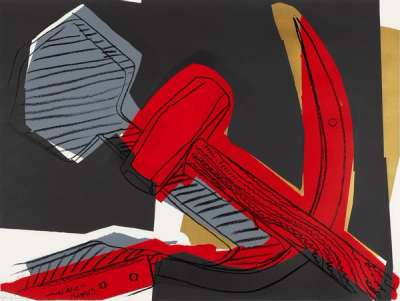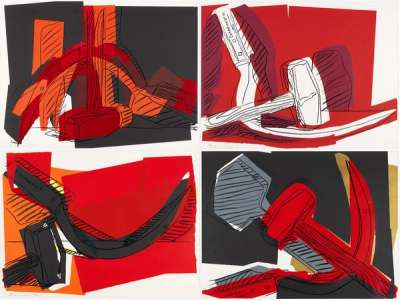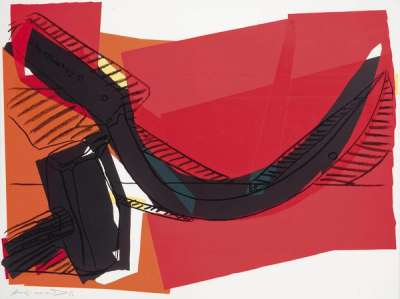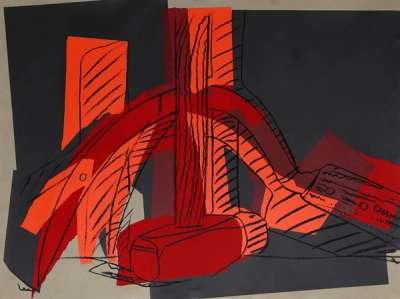
Hammer And Sickle (F. & S. II.62)

Hammer And Sickle (F. & S. II.62)
Signed Print
Andy Warhol
£10,500-£16,000Value Indicator
$21,000-$30,000 Value Indicator
$19,000-$29,000 Value Indicator
¥100,000-¥150,000 Value Indicator
€12,500-€19,000 Value Indicator
$100,000-$160,000 Value Indicator
¥2,010,000-¥3,060,000 Value Indicator
$13,000-$20,000 Value Indicator
AAGR (5 years) This estimate blends recent public auction records with our own private sale data and network demand.
There aren't enough data points on this work for a comprehensive result. Please speak to a specialist by making an enquiry.
Medium: Screenprint
Edition size: 50
Year: 1977
Size: H 76cm x W 102cm
Signed: Yes
Format: Signed Print
Track this artwork in realtime
Watch artwork, manage valuations, track your portfolio and return against your collection
Track auction value trend
Auction Results
| Auction Date | Auction House | Location | Hammer Price | Return to Seller | Buyer Paid |
|---|---|---|---|---|---|
| May 2019 | Freeman's | United States | |||
| May 2009 | Bonhams San Francisco | United States | |||
| May 2007 | Bonhams San Francisco | United States |
Meaning & Analysis
Hammer and Sickle (F. & S. II.62) is a print from Andy Warhol’s Hammer and Sickle series (1970) that was inspired by a visit to Italy in the 1970s where the artist was exposed to urban graffiti that featured many iterations of the Communist symbol of the hammer and sickle. Presenting the subject matter in the form of a still life, Warhol revitalises the classical theme with flattened form and the mass-produced printing process.
This print demonstrates Warhol’s unrivalled ability in addressing ideological, historical and social issues within one striking image repeated across a series. Using the classic colours of Soviet propaganda – shades of red and white on this print – Warhol strips the communist hammer and sickle symbol of its origins and transforms it into an aestheticized consumerist object. Just as Warhol had done with his Mao series (1972), he directly compares the controlled propagation of official images in communist countries to the American capitalist machine of consumerism, fashion kitsch and advertising.
With the help of his assistant Robbie Cuttrone, Warhol created the still life with tools bought from a hardware shop, arranging and then photographing them. The resulting image is produced by layering blocks of flat colour with crayon-like lines overlain on the image surface.
Andy Warhol was a leading figure of the Pop Art movement and is often considered the father of Pop Art. Born in 1928, Warhol allowed cultural references of the 20th century to drive his work. From the depiction of glamorous public figures, such as Marilyn Monroe, to the everyday Campbell’s Soup Can, the artist challenged what was considered art by blurring the boundaries between high art and mass consumerism. Warhol's preferred screen printing technique further reiterated his obsession with mass culture, enabling art to be seen as somewhat of a commodity through the reproduced images in multiple colour ways.



